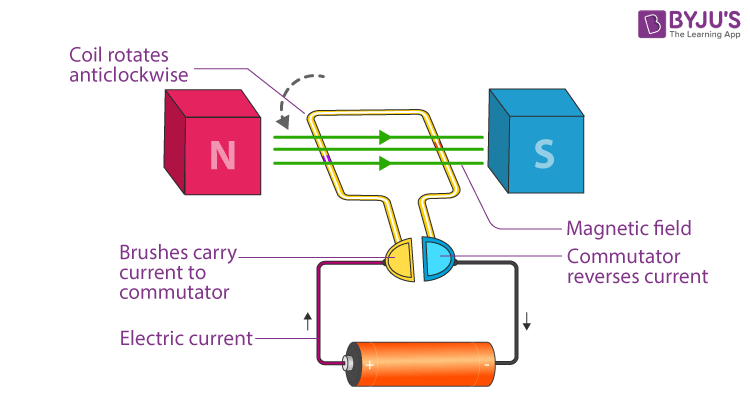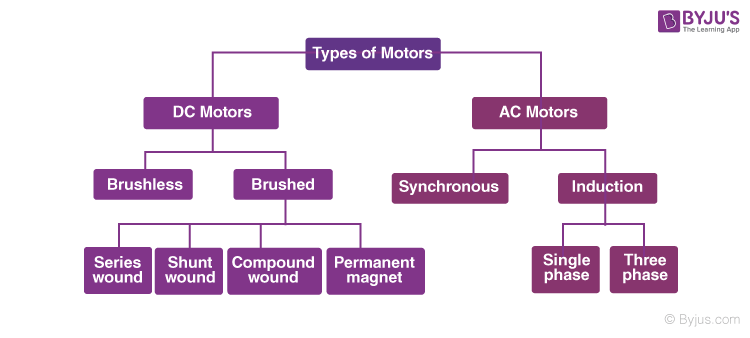An electric motor is used to convert electrical energy into mechanical energy. Let’s go through an instance: What does the mixer in your house do for you? The rotating blades mash and mix things for you. And if someone were to ask you how that works, what would you say? You would probably say that it works on electricity. Well, that’s not incorrect. Motors convert electric energy to mechanical work. The opposite is done by generators that convert mechanical work to electrical energy.
| Table of Contents: |
Different Parts of an Electric Motor and Their Function
A simple motor has the following parts:
- A power supply – mostly DC for a simple motor
- Field Magnet – could be a permanent magnet or an electromagnet
- An Armature or rotor
- Commutator
- Brushes
- Axle

- Power Source: A simple motor usually has a DC power source. It supplies power to the motor armature or field coils.
- Commutator: It is the rotating interface of the armature coil with a stationary circuit.
- Field Magnet: The magnetic field helps to produce a torque on the rotating armature coil by virtue of Fleming’s left-hand rule.
- Armature Core: Holds the armature coil in place and provides mechanical support.
- Armature Coil: It helps the motor to run.
- Brushes: It is a device that conducts current between stationary wires and moving parts, most commonly the rotating shaft.
What Is The Working Principle of An Electric Motor?
The working of an electric motor is based on the fact that a current carrying conductor produces a magnetic field around it. To better understand, imagine the following situation.
Take two bar magnets and keep the poles facing each other with a small space in between. Now, take a small length of a conducting wire and make a loop. Keep this loop in between the space between the magnets such that it is still within the sphere of influence of the magnets. Now for the last bit. Connect the ends of the loop to battery terminals.
Once electricity flows through your simple circuit, you will notice that your loop “moves”. So why does this happen? The magnetic field of the magnets interferes with that produced due to electric current flowing in the conductor. Since the loop has become a magnet, one side of it will be attracted to the north pole of the magnet and the other to the south pole. This causes the loop to rotate continuously. This is the principle of working of electric motor.
Types of Electric Motor
The primary classification of electric motor is as follows:

Uses of an Electric Motor
Electric motors are used in a variety of applications. Some of them are listed below.
- Drills
- Water Pumps
- Hard Disc Drives
- Washing Machines
- Industrial Equipment
You can expect the efficiency of a functioning motor to be around 70 – 85% as the remaining energy is wasted in heat production and sounds emitted.
Stay tuned with BYJU’S for more such interesting articles. Also, register to “BYJU’S – The Learning App” for loads of interactive, engaging Physics-related videos and an unlimited academic assist.
Frequently Asked Questions – FAQs
Which device converts mechanical work to electrical energy?
What is meant by electric motor?
An electric motor is used to convert electrical energy into mechanical energy.
What is the main function of armature core?
Armature core helps to hold the armature coil in place and provides mechanical support.




this was helpful.
Thx for information
Nice explanation. Very helpful.
very helpful for both learners and teachers, thanks
Explained in easy and simple terms.
Very easy to understand. Very helpful. Thank you.
It is very easy to understand, and your explanation were outstanding
It is really helpful and thanks ☺️ for provides us such awesome content!!